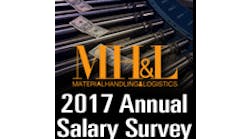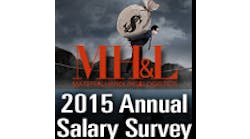U.S. Secretary of Homeland Security Janet Napolitano’s priority for 2010 was to secure aviation. That priority resulted in an unprecedented level of physical intimacy between regulators and the flying public. If you’ve been through an airport security pat-down or body scanner lately, you know what I mean.
In a recent Wall Street Journal op-ed, Napolitano announced her priority for 2011: to secure the global supply chain. That will require an unprecedented level of informational intimacy between regulators and the shipping public to keep tabs on precursor chemicals that can be used in improvised explosive devices (IEDs). That means “working with institutions across America where these chemicals are common—such as hospitals, labs and beauty-supply companies—to prevent their diversion for use in IEDs,” she wrote.
I’m all for that kind of intimacy between regulators and industry, but it has to be a two-way street. Sometimes regulators regulate things they know nothing about. That’s why, in his regulatory report appearing on page 12 of this issue, IWLA President and CEO Joel Anderson recommends you invite your state and local representatives to visit your facilities. “That way,” he writes, “they can talk to employees and get to see the supply chain’s impact on the economy first hand.”
I’ll take that advice a step further. Invite yourself to facilities in other industries to see how they’re helping to ensure supply chain security. MH&L has reported on the lessons being learned in the pharmaceutical and food chains when it comes to traceability. In fact pharma companies are gearing up for 2015, when California Pedigree Laws go into effect and they’ll have to find ways to serialize their products and shipments for tracking and traceability. GS1 US established a “2015 Readiness Program” for this industry so it could learn to leverage the same data stream used for regulatory compliance and realize business benefits from product serialization and supply chain visibility.
I recently had a chat with Sue Hutchinson, director of portfolio strategy at GS1 US, and she told me the food sector is looking into what the pharmaceutical industry is doing while these tracing procedures are still voluntary. She thinks it’s a good idea to show the government you can be self-policing now rather than wait for what the regulatory environment might look like in a couple years.
“Let’s be frank,” she said, “recalls cost a lot of money to execute, so it’s better to have better traceability on the forward track of food and catch problems earlier in the supply chain before they occur and force a voluntary recall.”
So before any regulation governing your supply chain is solidified, why not volunteer to get in the regulators’ heads about your industry, instead? That kind of intimacy can have positive repercussions. Many years ago, Bernie Knill, editor of this magazine when it was Material Handling Engineering, took state elevator inspectors to school when they tried to classify vertical reciprocating conveyors as elevators. Through a series of reports he galvanized the industry into fighting such ignorance among regulators. VRCs don’t carry people, therefore they are not elevators!
Today, makers of scissor lifts are finding similar confusion among building commissioners and elevator inspectors when it comes to their equipment. The writers of ASME A17.1, the national elevator code, stated clearly in regard to scissor lifts that “since the equipment does not move in guide rails, it is not an elevator.” But neither is it covered under ANSI B20.1, the code governing vertical reciprocating conveyors. Scissor lifts are covered under ANSI MH 29.1.
Rather than hope that elevator inspectors come to that conclusion themselves, scissor lift makers like Advance Lifts, Inc. studied elevator inspection forms from several states and developed an inspection form based on the latest draft of ANSI MH29.1, which is in the final stages of revision and should be released by this summer. The point here is that the industry took on the responsibility for making sure elevator inspectors and municipal building commissioners around the country apply the right code to their equipment.
By being an active participant in the regulatory process you’ll find the burden of being regulated easier to bear—and much less invasive.

